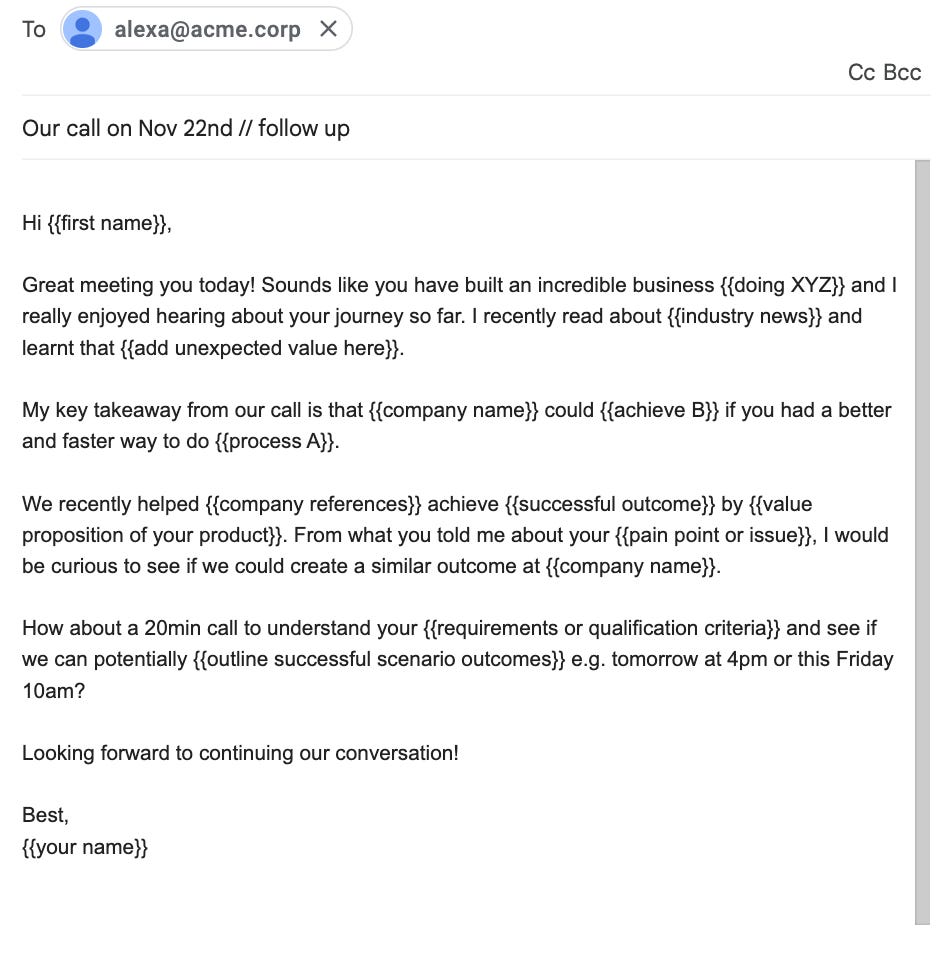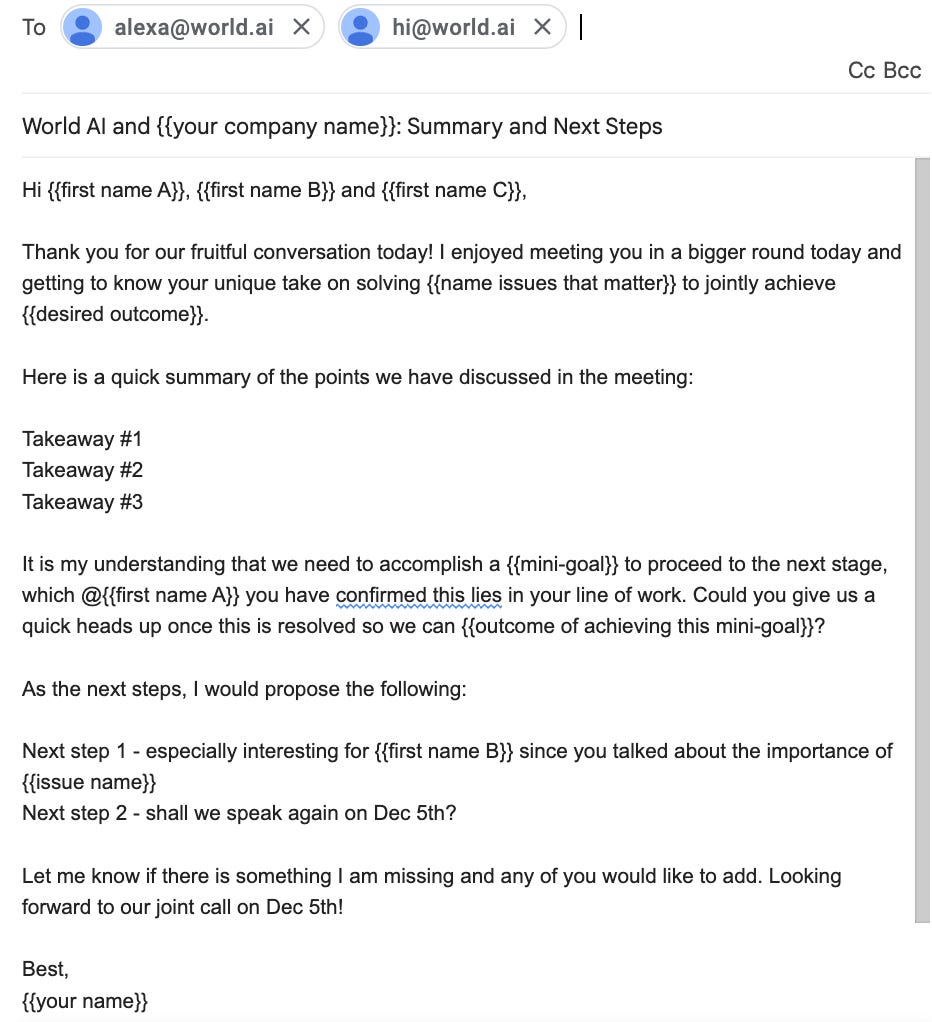The Ultimate Guide for Follow-up Emails with Prospects in B2B
Get the desired next steps with your dream customers.
Did you know that in B2B, only 2% of sales are made during the first point of contact? This means that if you do not follow up with your prospects, you may be missing out on 98% of potential sales 👀
So, what does it take to do a great follow up?
Over the last couple of months, I have spoken with 50+ sales leaders on what they believe is a do and don’t in the fast-changing landscape of B2B SaaS buying and selling. I also added some of my favourite tricks from my time working in an outbound B2B sales team.
Summarizing Best Practices
💪🏼 Create unexpected value.
It is not only about objection handling when talking to prospects. Be of help where they do not expect you to be - listen closely to their problems (even non-work related), e.g. when they complain about the car being stuck in traffic, share an alternative route from A to B with them and they will be surprised with your attention to detail and obsession with solving their problems. If they can trust you on simple things, they will with time start trusting you on things like their own business strategy.
✍️ Share your perspective on things.
People buy from people. Sharing your honest opinion on their offering, setup or even their recent social media activity is what makes you human and adds to the overall impression of your company and product.
✔️ Propose clear next steps.
One of the biggest curses of the Information Age may be the fact that it is just too much of everything: too much information that is available too quickly. Gaining clarity in a chaotic environment feels great, and you can be that one person that gives someone clarity. Be precisely clear on what the next steps should be, and get people’s buy-in on these steps via conversation or emails. Use plain language, short sentences or even bullet points. The easier it is to understand you, the easier it is to gain clarity for the other party.
🪄 Make it easy to say yes.
Think of the person looking to solve a specific problem: you do not want to be the process of buying from you get more complex than the actual problem they are trying to solve. Moving the needle does not have to be hard or require huge commitment from your prospects: instead of asking for their availability for a demo session, propose two slots that fit you and ask them to simply choose “1” or “2” and promise to get back with an invite. Instead of proposing a 1h PoC planning session, send a proposal of what PoC plan could look like and say that you can review it in a 15min call in case they have any objections. Make it easy to simply say yes. Eliminate any non-essential tasks and make it not only easy, but desirable to work with you.
🔝 Stay confident.
Last but not least: stay confident! Do not act like you are a burden to someone, because if you believe that, the person on the other end will to. If you genuinely believe you can help someone solve a problem, you are doing good. You are the expert on solving this problem because you have a secret sauce - a product - that can help them repeatedly solve this issue and have better life in general. You bring value to the table and there is a reason for including you in these conversations. Own the process of navigating through a pain point and finding a solution, and sound confident when you do. People sense deep insecurities and high confidence levels, and the latter can get you to places.
So, what does it look like in practice?
Based on these conversations and best practices, I have compiled a list of five follow up templates that can make a difference in getting to a yes.
🪄 Post-cold call follow up email
🪄 Post-demo follow up email
🪄 Follow up after a trigger event
🪄 Managing multiple stakeholders kind of follow up
Try it out!
Luckily, writing good follow ups and getting replies is an activity with super fast feedback loops: you either get the next step, a “no, thank you” or simply get ignored. Running A/B tests and adjusting your writing style based on what works is what makes a huge difference in the long run.
Remember: you have only lost the deal once you have decided to give up.
Happy building, happy selling!
Cheers,
Mika









